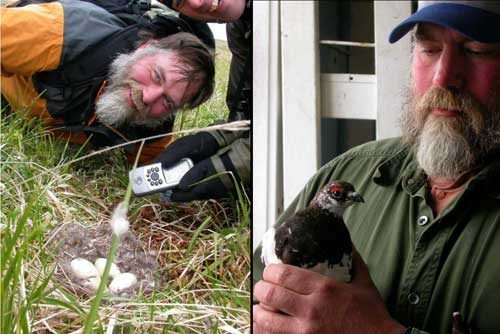Kiwiksat maniigtaartut qutmi. – Oystercatchers always lay their eggs on the beach.
With a world population of about ten thousand birds, the American black oystercatcher (Haematopus bachmani) is a large, jet-black shorebird with a long orange beak and orange-encircled eye. It inhabits the western coast of North America, ranging from the Aleutian Islands to Mexico’s Baja Peninsula. It is most common at the northern end of this range, where it thrives along rocky coasts. Over half of all black oystercatchers live in Alaska, with the largest concentrations in Prince William Sound and the Kodiak Archipelago.
The oystercatcher’s diet reflects its environment. Around Kodiak, oystercatchers are present year-round, eating limpets, mussels, gastropods, and chitons as well as fish and crab from the rich intertidal zone. Oystercatchers are monogamous and territorial.
They mate with one partner and defend their nesting territories. In spring, females lay small clutches of eggs in simple nests on the beach. Scraped into the ground, these nests can be hard to see. Oystercatcher eggs are grey and spotted, like stones, blending into the beach. People and foxes are the biggest threat to oystercatchers, because the beaches the birds use can attract people and animals that disturb their nests.
According to an Alutiiq legend, God punished the oystercatcher for laying its eggs too early one year. The birds were not supposed to reproduce until May, but they did not wait. Now, they must lay their eggs right on the beach as they have been banished from the land.








